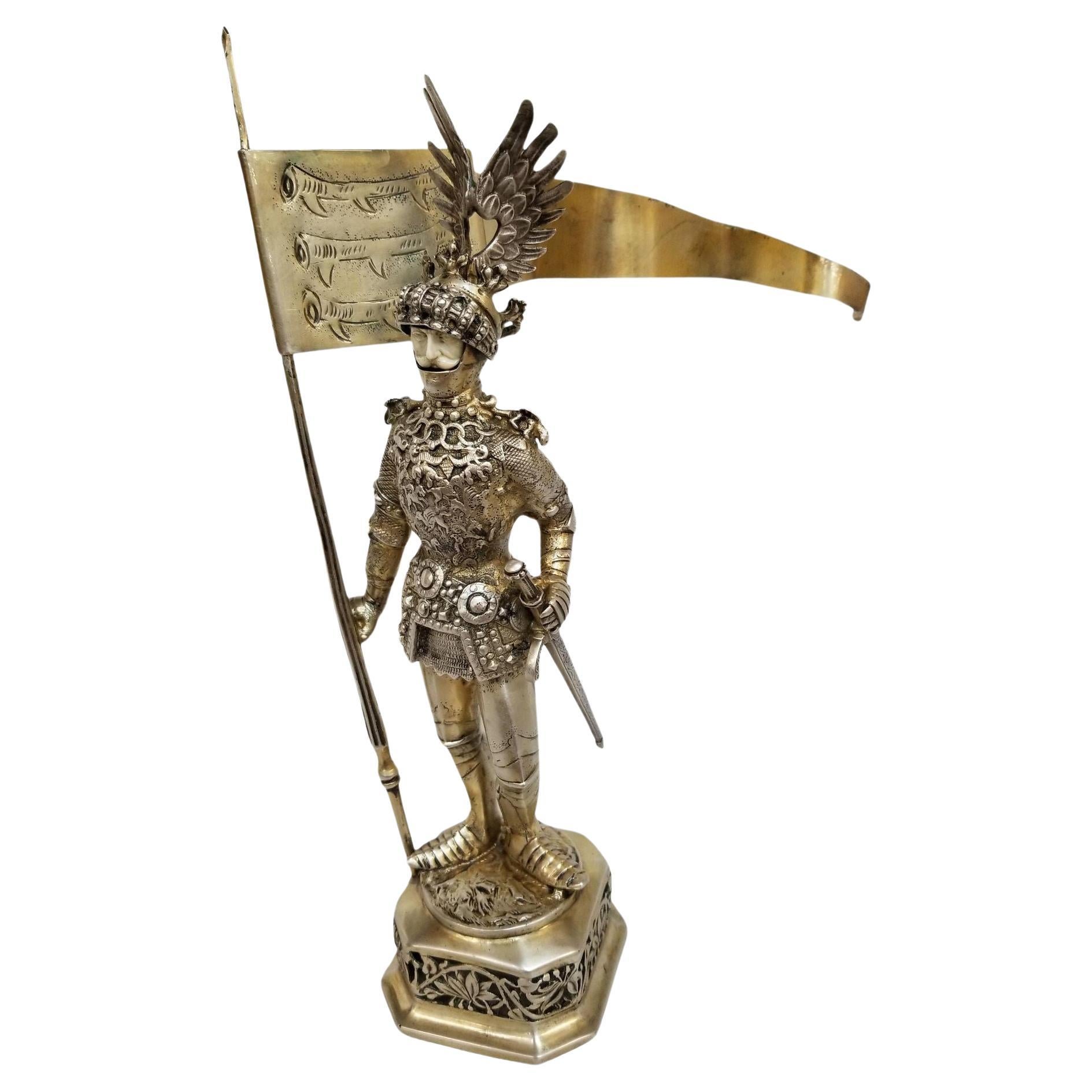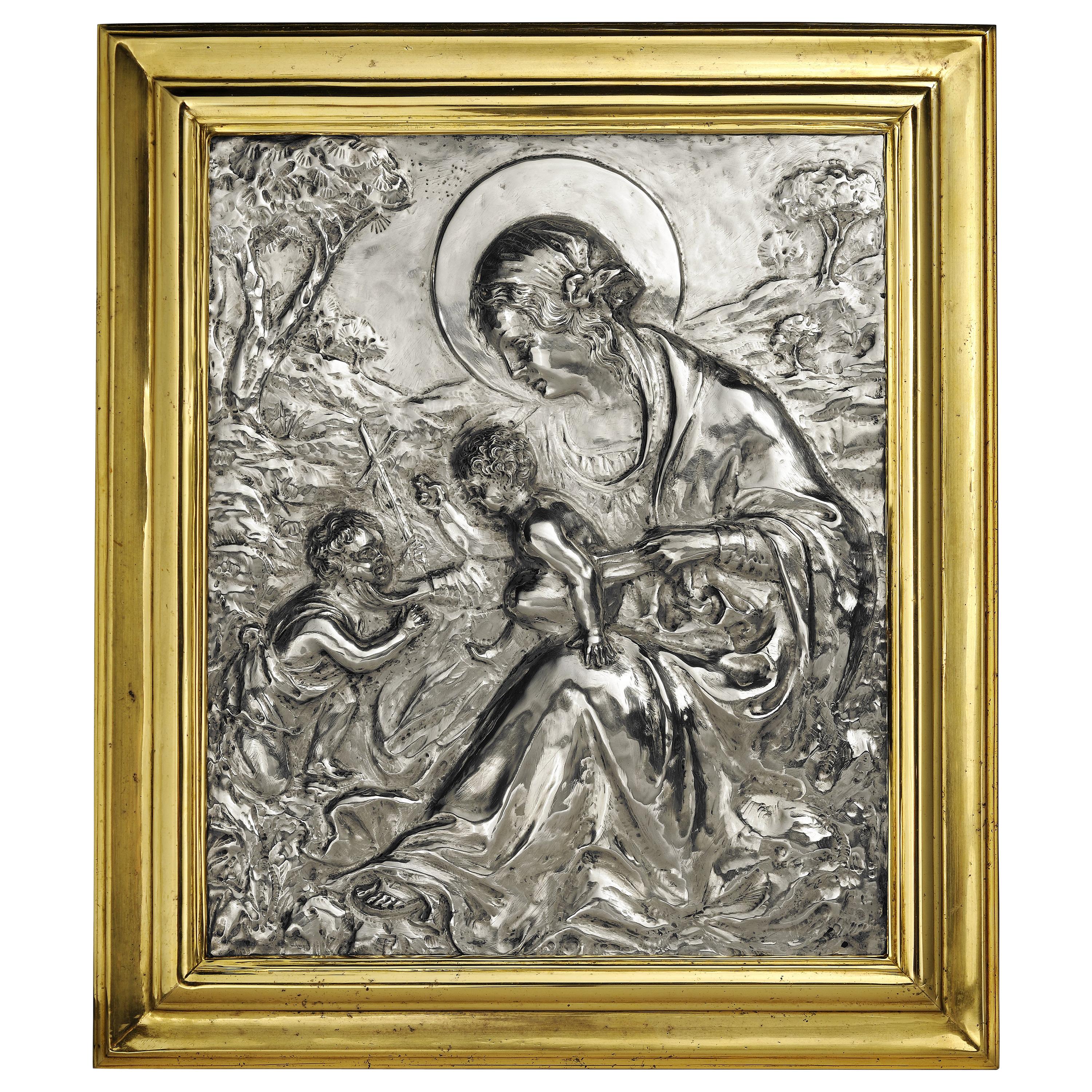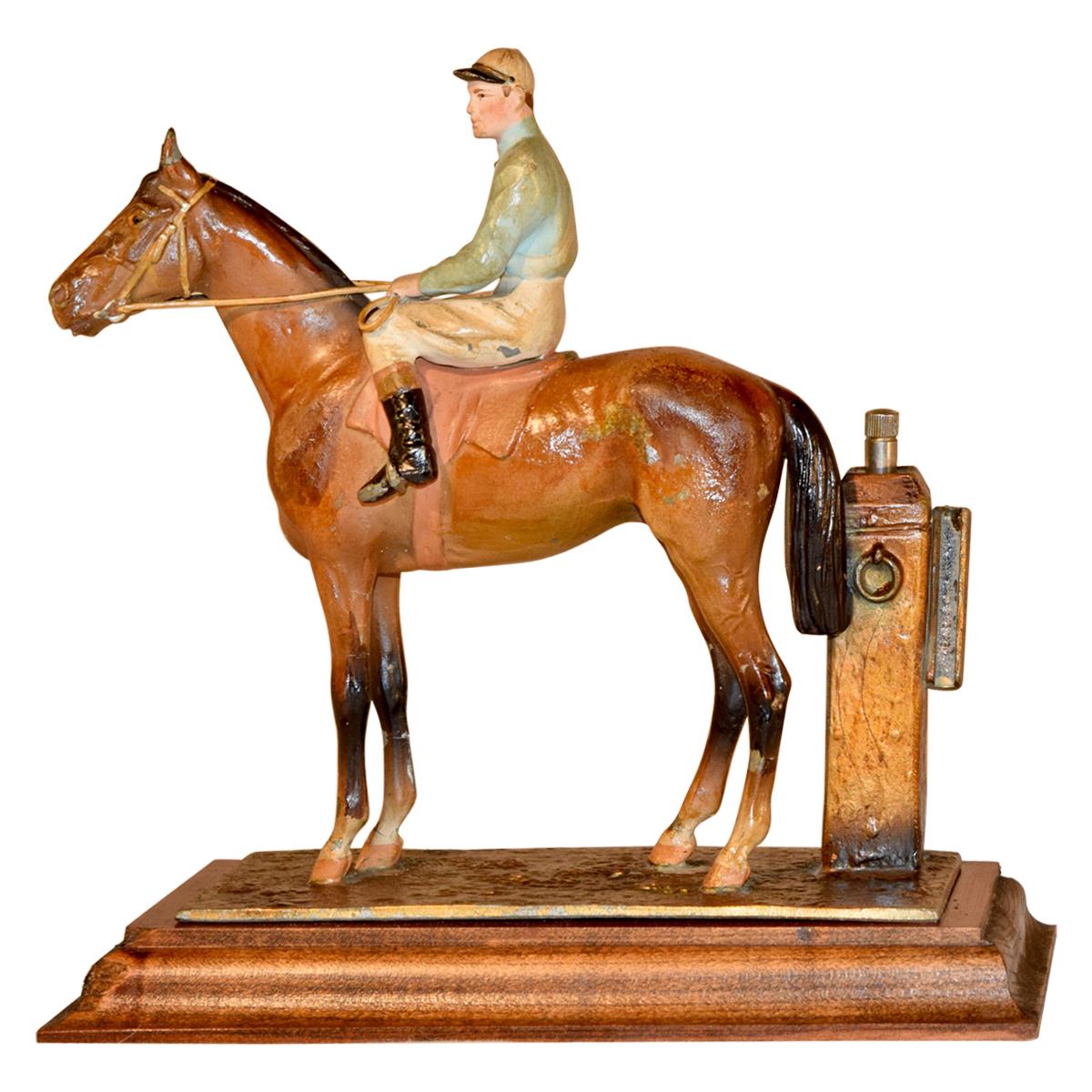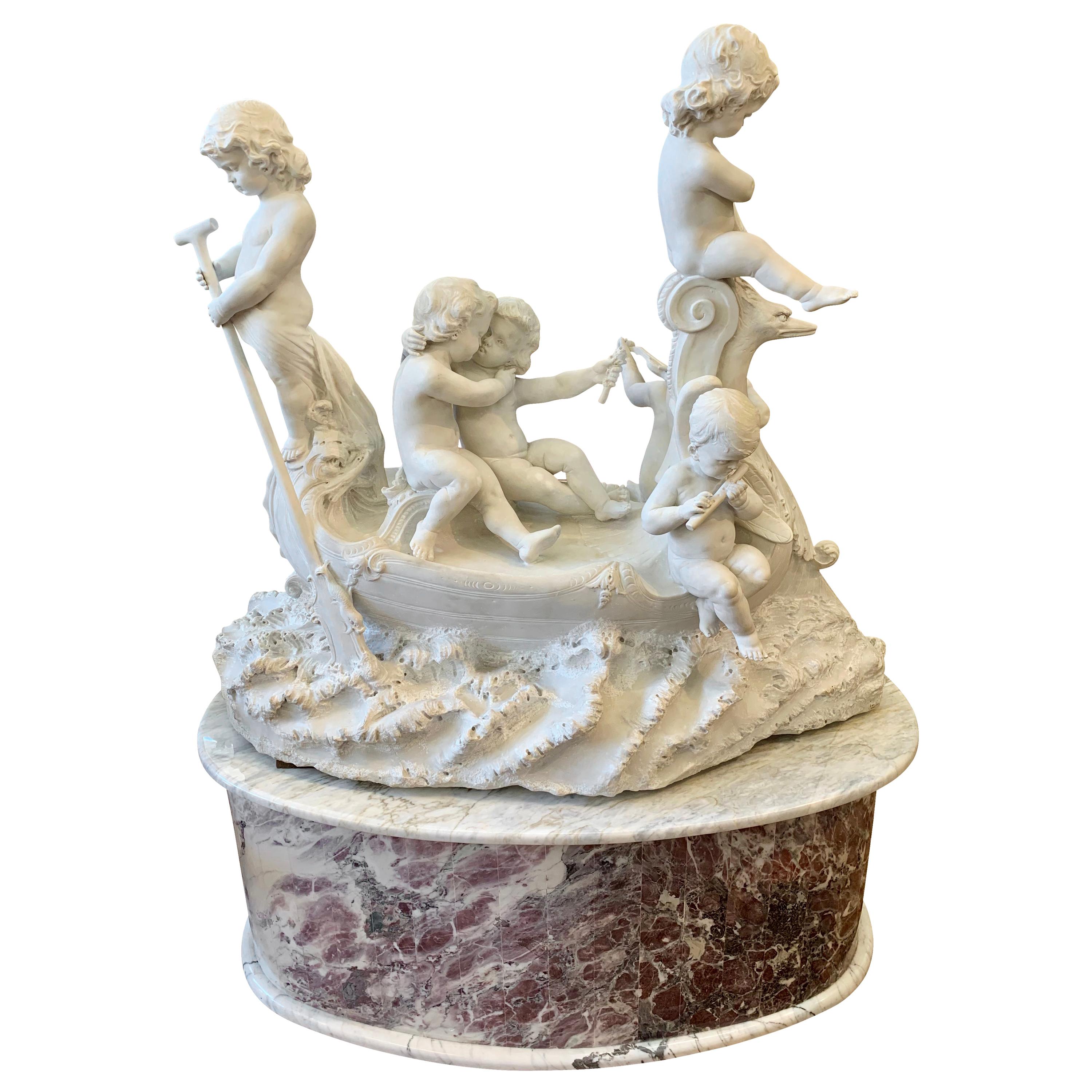Items Similar to Miniature Army Boat in Sterling Silver, 19th Century, English Work.
Want more images or videos?
Request additional images or videos from the seller
1 of 10
Miniature Army Boat in Sterling Silver, 19th Century, English Work.
About the Item
Army boat in solid silver, English work of the 19th century, weight 1600gr, on its wooden and velvet base.
Boat: h: 27cm, w: 37cm, d: 14cm
With tray: H: 30cm W: 45cm D: 20cm
- Dimensions:Height: 11.82 in (30 cm)Width: 17.72 in (45 cm)Depth: 7.88 in (20 cm)
- Style:Napoleon III (Of the Period)
- Materials and Techniques:
- Place of Origin:
- Period:
- Date of Manufacture:19th century
- Condition:Wear consistent with age and use.
- Seller Location:Saint-Ouen, FR
- Reference Number:1stDibs: LU1530236581852
About the Seller
4.8
Platinum Seller
These expertly vetted sellers are 1stDibs' most experienced sellers and are rated highest by our customers.
Established in 2003
1stDibs seller since 2015
280 sales on 1stDibs
Typical response time: 2 hours
- ShippingRetrieving quote...Ships From: Saint-Ouen, France
- Return PolicyA return for this item may be initiated within 3 days of delivery.
More From This SellerView All
- Sculpture in Patinated Bronze, Signed Marcel Debut, 19th CenturyBy Marcel DebutLocated in Saint-Ouen, FR"Sculpture in patinated bronze, signed Marcel Debut, 19th century" Important sculpture in patinated bronze, signed Marcel Debut, XIXth Century, orientalist subject, nice brown pat...Category
Antique 19th Century French Napoleon III Figurative Sculptures
MaterialsBronze
- Silvered Bronze Sculpture by Louis Kley, 19th Century, Napoleon III Period.By Louis KleyLocated in Saint-Ouen, FRSilvered bronze sculpture by Louis Kley, 19th Century, Napoleon III period. Napoleon III period sculpture, circa 1877 by Louis Kley, representing an Angelot in silvered bronze, red ...Category
Antique 19th Century French Napoleon III Figurative Sculptures
MaterialsMarble, Bronze
- Antique Bronze Mantel Set, 19th CenturyLocated in Saint-Ouen, FR"Antique bronze mantel set, 19th century" Napoleon III period marble and patinated bronze mantel with its two cassolettes. Perfect condition. Cassolettes s...Category
Antique 19th Century European Napoleon III Figurative Sculptures
MaterialsMarble, Bronze
- Terracotta Sculpture, 19th Century, Circa 1880.Located in Saint-Ouen, FRTerracotta sculpture, 19th century, circa 1880. 19th century terracotta bust, Napoleon III period. Dimensions: h: 66cm, w: 78cm, d: 32cmCategory
Antique 19th Century French Napoleon III Busts
MaterialsTerracotta
- Musical Enameled Bronze Carousel, 19th Century.By Franz BergmannLocated in Saint-Ouen, FRMusical Enameled Bronze Carousel, 19th Century. Musical carrousel by Franz Bergmann in enameled bronze, the carrousel turns with music, 19th century, Napoleon III period. Dimension...Category
Antique 19th Century European Napoleon III Mobiles and Kinetic Sculptures
MaterialsBronze
- Sculpture in Gilded and Patinated Bronze, Signed "Campagne", 19th Century.By CampagneLocated in Saint-Ouen, FRSculpture in gilded and patinated bronze, signed "campagne", 19th century. A Napoleon III period bronze sculpture, 19th century, gilded and patinated bronze, marble base, signed "Ca...Category
Antique 19th Century French Napoleon III Figurative Sculptures
MaterialsBronze
You May Also Like
- Sterling Silver 19th Century Knight in Shinning ArmorLocated in Van Nuys, CAThis antique sterling silver knight figurine from the 19th century is a captivating masterpiece. Dressed in full medieval armor with a staff and fl...Category
Antique 19th Century American Medieval Figurative Sculptures
MaterialsSilver
- 19th Century English Gold Washed Sterling Vanity SetLocated in Los Angeles, CALate 19th century English gold washed sterling vanity or dressing set with chinoiserie motif. Hallmarked England. The measurement below is for the hand mirror only.Category
Antique 19th Century English Sculptures
- 19th Century Italian Sterling Silver Madonna, circa 1830Located in Milano, ITEmbossed and engraved silver plaque La Madonna del lago (The Madonna of the Lake) Probably Milan, post 1824 Brass frame It measures 16.14 in x 13.85 in (41 x 35.2 cm) and it weighs 10.357 pounds (4.698 g): silver 1.31 pounds (598 g) + brass 9.03 pounds (4.100 g) State of conservation: some abrasions on the bottom. The frame is old, but not original. The plaque is made up of a sheet of embossed and engraved silver, and held in a solid brass frame. It depicts the “Madonna del lago” – “Madonna of the Lake” - (the Madonna with Child and San Giovannino) by Marco d'Oggiono (Oggiono, 1474 circa - Milan, 1524 circa), while changing only the background landscape. Almost certainly the subject reproduced in the plaque was taken from a famous engraving by Giuseppe Longhi (Monza, 1766 - Milan, 1831), one of the greatest engravers of his era. The silver is unmarked, probably because originally the Madonna was due to be exposed in a church: sometimes precious metals destined for worship and liturgical use would be exempted from payment and were, therefore, not marked. It is very likely that the plaque was made in Milan because in this city in 1824 the engraving by Giuseppe Longhi was made and printed. In addition, in Milan, the alleged lost painting by Leonardo da Vinci in his Milanese period (1482-1500) would be produced; this is the painting from which Marco d'Oggiono took his version. The painting Marco d?Oggiono was one of Leonardo da Vinci's most brilliant students and collaborators (D. Sedini, Marco d’Oggiono, tradizione e rinnovamento in Lombardia tra Quattrocento e Cinquecento, Roma 1989, pp. 151-153, n. 56; p. 225, n. 124, with previous bibliography). His style reflects in every way that of the Tuscan Maestro, so much so that he was the one who executed some copies of da Vinci's paintings. The execution of the “Madonna del Lago” probably draws inspiration from a lost painting by the Maestro, created while he was living in Milan (1482-1500). There are many similarities with other works by Leonardo such as the “Vergine delle rocce” or the “Vergine con il Bambino e San Giovannino, Sant’Anna e l’Agnello”. The painting, from which the drawing and then the famous engraving were taken, is found today at the M&G Museum of Bob Jones University in Greenville, South Carolina, where it came to rest after the sale of the Harrington Collection in London in 1917. The work appears in the inventories of the collection of Napoleon and Joséphine Bonaparte at the castle of Malmaison, before 1809. The Malmaison building was born and developed in the 17th and 18th centuries. In the 18th century it belonged to Jacques-Jean Le Coulteux du Molay, a wealthy banker. Later, during the Directory, Joséphine Bonaparte de Beauharnais bought it on April 21st, 1799, but settled at the castle definitively only after her husband separated from her in 1809. She remained there until 1814, the year of her death. When Joséphine died, the estate passed to her son Eugène de Beauharnais, who moved to Munich with his whole family in 1815, bringing with him the collection of paintings he inherited from his mother. Eugène died in 1824 and his wife Augusta of Bavaria (von Bayern), unable to keep it, in 1828 sold the Malmaison to the Swedish banker Jonas-Philip Hagerman. It is likely that in this period Augusta also sold part of the paintings inherited from her husband, including the “Madonna del Lago”. This painting then came into the possession of Leicester Stanhope, fifth Earl of Harrington (1784 - 1862) and then was passed down to his descendants. In 1917, at the death of Charles, eighth Earl of Harrington, his brother Dudley inherited the title and properties and he put up a part of his collections for sale. Among these, precisely, the painting by Marco d'Oggiono was to be found. On the occasion of that auction the painting was presented as a work by Cesare da Sesto, by virtue of a handwritten note by the Countess of Harrington on the back of the table. However, already in 1857, the German critic Gustav Waagen had identified Marco d'Oggiono as the author of the painting, then exhibited in the dining room of Harrington House in London (Treasures of Art in Great Britain, in 4 volumes, London, 1854 and 1857). The engraving Giuseppe Longhi was one of the most renowned engravers in Italy between the end of the 18th century and the first quarter of the 19th century. In 1824 Giuseppe Longhi, based on a design by Paolo Caronni, made a famous engraving of the painting of Marco d?Oggiono. The activity of Longhi was then at the peak of his notoriety, enough to earn him very substantial commissions; it is not risky to suppose that some of his successful engravings were also reproduced using other means: in our case in silver. (A. Crespi, a cura di, Giuseppe Longhi 1766–1831 e Raffaello Morghen...Category
Antique 1820s Italian Neoclassical Sterling Silver
MaterialsSterling Silver, Brass
- 19th Century English Jockey StrikerLocated in High Point, NC19th century jockey striker from England made from polychromed spelter. It is a lovely model of a mounted jockey on horseback with reins in front of a hitching post, which is the str...Category
Antique 19th Century English Victorian Animal Sculptures
MaterialsMetal
- Large 19th century marble sculpture, 'The Love Boat'Located in Los Angeles, CAThis charming 19th century Italian carved white Carrara marble group depicts six children in a boat. Three children playing musical instruments (violin, flute and angel harp), one ch...Category
Antique 19th Century Figurative Sculptures
MaterialsMarble
- 19th Century Berlin Iron Work Statue of GoetheLocated in Hudson, NYThis statue cast in heavy iron is an interesting example of pieces made and knows as Berlin Ironwork. During and after the Napoleonic wars German citiz...Category
Antique 19th Century German Neoclassical Sculptures
MaterialsIron
Recently Viewed
View AllMore Ways To Browse
Solid Silver Sculpture
Ancient Rome Statue
Stone Human Artifacts
Venus Marble Sculpture
Statue Flute
Female Antique Statue
Art Deco Dancing Girl
Statue Green Eyes
Bronze Roman Soldier
Ancient Roman Fountain
Le Grange Furniture
Marble Bath Set
Tomb Unknown Soldier
Lansere Bronze
Death Of Achilles Sculpture
Mcm Crucifix
1900 French Bronze Statues
Classical God





